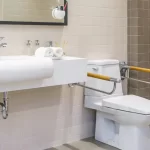When remodeling your kitchen, the counters are a critical part of the aesthetic and functionality. The counters must be durable, heat-resistant and easy to maintain, but they also need to suit your taste and budget.
A new countertop can dramatically improve the look of your kitchen and add value to your home. But what kind of counters are best?
Marble
Marble is a classic choice that adds elegance and beauty to any kitchen. It is also one of the more luxurious countertop options and can increase your home’s resale value.
It has a natural, timeless look that can fit in with a variety of styles, from rustic farmhouse to modern or even boho chic. It is also naturally cool and resists heat well, making it a good choice for baking.
Marble isn’t as durable as granite or quartz, but it still holds up fairly well to normal use. However, it is soft and vulnerable to stains, particularly from acidic liquids. Because of this, it needs to be sealed regularly (every six months) to protect it from damage. The type of finish you choose will also make a difference. Polished marble has a high sheen that highlights the veining but is more susceptible to scratches, while honed marble is less shiny and hides scratches better.
Granite
Granite is a premium countertop material that can add a timeless quality to a kitchen. The stone’s unique appearance is appealing to many homeowners, and it can be a great compliment to rustic or modern designs. Granite is also sustainable, as one quarry site can provide a lifetime of countertops and it requires minimal processing.
Polished granite is stain resistant and can resist etching from acidic cleaners. However, the surface may require annual resealing to keep it looking its best. Granite is heat resistant, which makes it practical to place hot pots and pans directly on the countertop, but it is advisable to use trivets for especially hot items.
Homeowners who choose granite countertops must be prepared to pay more for their project than other materials, and they must be willing to allow for seams between the slabs. These seams can result in more labor, adhesives and installation time than a seamless alternative. For this reason, granite’s popularity has slipped slightly behind quartz in recent years.
Ceramic Tile
Tile is one of the most popular countertop options because it offers a broad selection of color, shape, and size choices. This flexibility allows homeowners to tailor the material to fit their specific style and needs. The material is durable, heat-resistant, and affordable when compared to other options on the market.
Tile is also easy to clean and can be resealed on an annual basis to help keep it looking new. However, the hard surface can cause scratches or gouges on the counter. Additionally, the grout lines between tiles can trap dirt if not cleaned regularly. Tile counters may not be the best option for families with children or elderly residents prone to falls or slipping accidents. The material can also be uncomfortable to stand on for long periods of time. This material is best used around the sink or stove area where the surface is less susceptible to spills and hot temperatures.
Solid Surface
Solid surface kitchen countertops are man-made from a blend of acrylic polymers and natural minerals. This mix allows these surfaces to be fabricated into an array of shapes and patterns. They can also be pigmented to achieve a variety of looks from solid colors to granite-like flecks. These surfaces are easy to clean and do not require sealing like pricier natural stone counters.
They are very durable and resist scratching, chipping and etching well. They are also non-porous, making them hygienic and safe for food preparation. They can be sanitized with mild soap and water or a pH-balanced cleaner.
Although durable, they are not heat-resistant. Hot pans or cigarette burns may discolor, scorch or crack the surface. It is important to use trivets and hot pads when preparing meals on this material. It is also susceptible to damage from direct cuts, so it is best to use cutting boards instead. However, deep scratches can be sanded out of this material.


 Accessible Bathroom Design – Making Bathrooms Safe and Comfortable for Everyone
Accessible Bathroom Design – Making Bathrooms Safe and Comfortable for Everyone  Manchester Kitchen Fitters Unveiled: How to Make the Right Choice
Manchester Kitchen Fitters Unveiled: How to Make the Right Choice  Bathroom Tiles Are Practical, Easy to Clean and Highly Customizable
Bathroom Tiles Are Practical, Easy to Clean and Highly Customizable  The Ultimate Guide to Kitchen Remodeling
The Ultimate Guide to Kitchen Remodeling  Revamping Your Home Office For Productivity and Creativity Boosters
Revamping Your Home Office For Productivity and Creativity Boosters  The Pros and Cons of Different Kitchen Countertop Materials
The Pros and Cons of Different Kitchen Countertop Materials  Refresh Your Home With Floor Paint
Refresh Your Home With Floor Paint 

